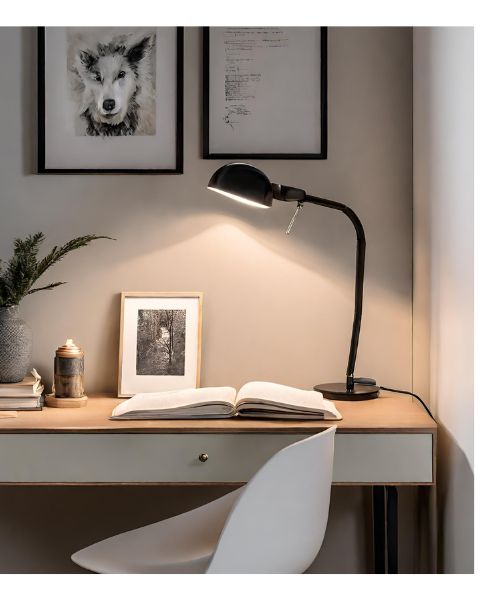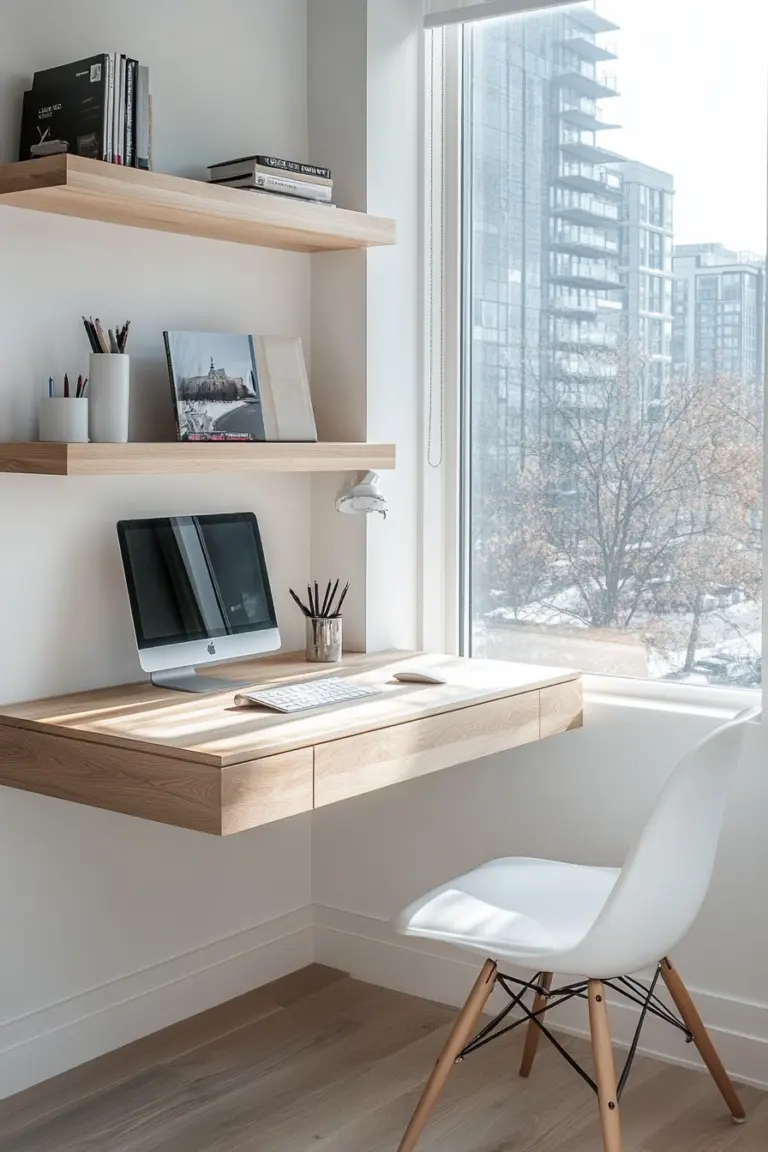10 Ways to Create a Productive Study Nook in Small Rooms
As students, finding an ideal place to study is essential for maintaining focus and productivity. However, in a small room where space is limited, creating a dedicated study area can be challenging.
The good news is that with a few practical tips and creative ideas, you can still carve out an efficient study space even in the smallest of rooms.
In this post, we will explore various strategies and techniques to help you make the most of your study space in a compact setting.
How to Make a Study Space in a Small Room?
1. Evaluate Your Available Space
Before diving into creating your study space, take a step back and evaluate the available space in your room.
Look for areas that you can potentially convert into a study area. It could be a corner, an unused wall, or even the space under your lofted bed.
By identifying the possibilities, you can begin to visualize how your study space will fit into your room.
2. Minimize Clutter
One of the most important aspects of creating a study space in a small room is to minimize clutter. Clutter can make a small space feel even more confined and can lead to distractions.
Start by decluttering your room and removing any unnecessary items. Consider investing in storage solutions such as bins, shelves, or under-bed organizers to keep your study materials and belongings organized and out of sight. This will help create a clean and organized environment that is conducive to studying.
3. Utilize Vertical Space

In a small room, using vertical space can be a game-changer. Look for opportunities to utilize wall-mounted shelves or hanging organizers to store books, supplies, and other study materials.
This will free up precious desk space and make your study area feel more spacious.
Additionally, consider using a whiteboard or corkboard on the wall to keep track of your tasks, deadlines, and important notes.
4. Invest in a Functional Desk

When space is limited, choosing the right desk is crucial. Look for a desk that is compact and provides sufficient surface area for studying and working.
Consider opting for a desk with built-in storage options, such as drawers or shelves, to maximize space efficiency. If space is extremely limited, a wall-mounted or foldable desk could be a great solution.
When selecting a desk, prioritize functionality and comfort to ensure that you have a comfortable and ergonomic study space.
5. Optimize Lighting

Good lighting is essential for creating an ideal study environment. In a small room, natural light may be limited, so it is important to optimize artificial lighting. Invest in a desk
lamp that provides ample lighting for your study area. Position the lamp in a way that minimizes shadows and glare on your workspace.
Additionally, consider using light-colored or reflective surfaces, such as a white desk or a mirror, to bounce light around the room and make it feel brighter and more spacious.
6. Create a Distraction-Free Zone

In a small room, it can be challenging to create a dedicated study space that is free from distractions. However, there are strategies you can implement to minimize distractions and create a focused environment.
Start by turning off or silencing your electronic devices to avoid the temptation of checking social media or receiving notifications.
If possible, position your study space away from high-traffic areas or sources of noise, such as a window facing a busy street.
Additionally, consider using noise-cancelling headphones or playing instrumental or ambient music to help mask background noise.
7. Personalize Your Study Space

While functionality is key when creating a study space in a small room, it is also important to make the space feel personal and inspiring.
Add touches that reflect your personality and interests, such as artwork, plants, or motivational quotes. These personal touches can help create a positive and motivating environment that will make you want to spend more time in your study space.
8. Stay Organized
Maintaining organization is crucial for an efficient study space in a small room.
Create a system for organizing your study materials, whether it’s using color-coded folders, binders, or digital organization tools.
Keep your desk clutter-free and designate specific areas for different tasks, such as a designated area for textbooks, notebooks, and pens. Regularly declutter and tidy up your study space to ensure that it stays organized and inviting.
9. Prioritize Comfort
A comfortable study space is essential for extended periods of focused studying. Invest in a comfortable chair that provides proper support for your back and promotes good posture.
Consider placing a cushion on your chair for added comfort. Also, ensure that your desk is at an appropriate height, allowing your arms to rest comfortably on the surface.
Adding a small rug or floor cushion under your desk can also provide a cozy touch to your study area.
10. Establish a Study Routine

Lastly, to make the most of your study space in a small room, establish a study routine that works for you.
Designate specific times for studying, and consistently stick to those times.
Having a routine will help train your mind and body to be in a focused and productive state when you enter your study space.
Additionally, taking regular breaks to stretch, move around, and relax will help prevent fatigue and maintain productivity throughout your study sessions.
Final Words
In conclusion, creating an efficient study space in a small room is possible with thoughtful planning and organization.
By following all the above-mentioned ways, you can transform even the smallest of rooms into an ideal study environment.
Remember, a well-designed study space can greatly enhance your focus, productivity, and overall academic success.







